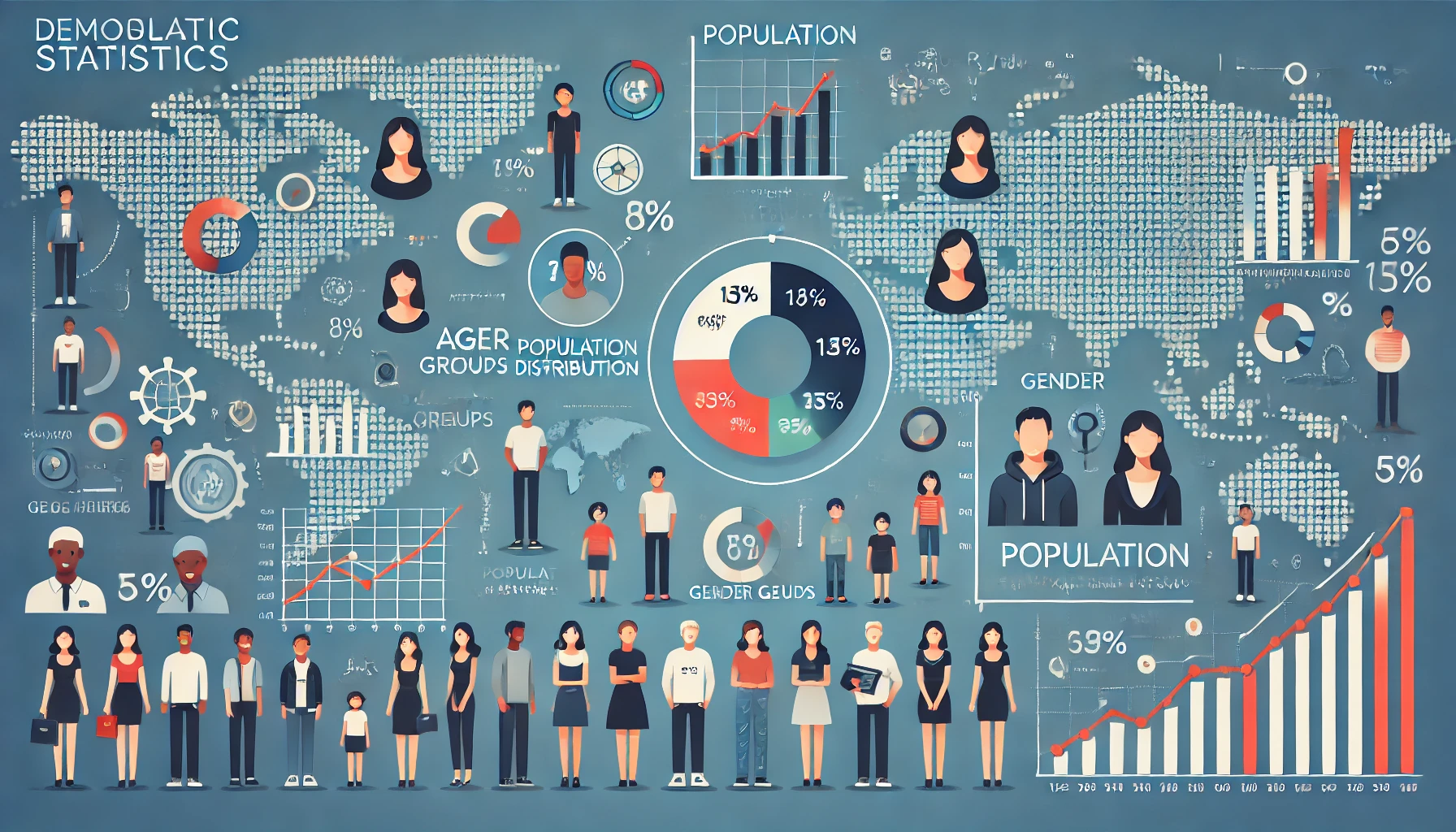Demographic statistics refer to the quantitative data that describes the structure and characteristics of a population. These statistics are used to analyze various aspects of a population, such as size, growth rate, age distribution, gender ratio, birth and death rates, migration patterns, and more. Demographic statistics are essential for understanding the composition and trends within a population, which in turn help in policy-making, economic planning, and resource allocation.
Applications of Demographic Statistics:
- Policy and Economic Planning:
- Governments use demographic statistics to plan for public services like healthcare, education, housing, and social security. Population trends help forecast future needs and shape policies that ensure sustainable development.
- Market Analysis and Business Strategy:
- Businesses use demographic data to analyze consumer behavior, segment markets, and plan product offerings. Understanding age, gender, income distribution, and population growth can guide marketing strategies and investment decisions.
- Healthcare and Social Services:
- Demographic statistics regarding age distribution, life expectancy, and birth/death rates inform healthcare planning and social services. Governments and organizations use this data to allocate resources for hospitals, retirement homes, and welfare programs.
- Urban Planning and Infrastructure Development:
- Urbanization trends, population density, and migration statistics are essential for city planning, infrastructure development, and public transportation systems. Understanding demographic patterns helps ensure that cities grow sustainably and efficiently.
- Education Systems:
- Demographic data on the age structure and literacy rates are used to design education systems that meet the needs of different population groups. This includes planning for school enrollment, teacher training, and educational facilities.
- Pension and Retirement Planning:
- Demographic statistics like life expectancy and dependency ratios are crucial for designing pension systems and retirement policies. Governments use these metrics to ensure the sustainability of pension schemes and support systems for the elderly.
- Environmental Sustainability:
- Understanding population growth, migration, and urbanization trends helps policymakers address environmental challenges such as deforestation, pollution, and resource depletion. Sustainable development strategies often rely on demographic insights.
Conclusion:
Demographic statistics are essential tools for understanding population dynamics and trends. They provide valuable insights into the size, structure, and characteristics of a population, which are crucial for effective policy-making, economic planning, and social services. By analyzing key demographic indicators such as birth and death rates, age distribution, and migration patterns, governments, businesses, and organizations can make informed decisions that promote sustainable development and improve the quality of life for citizens

